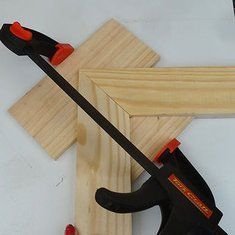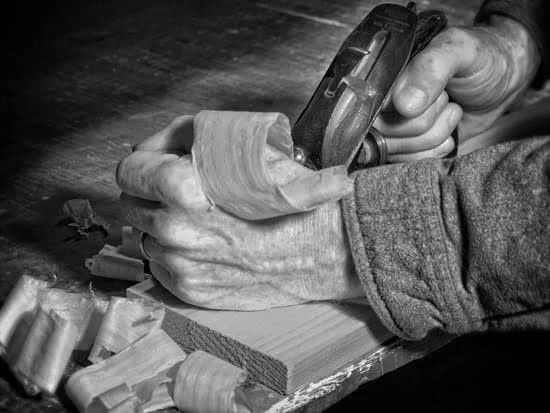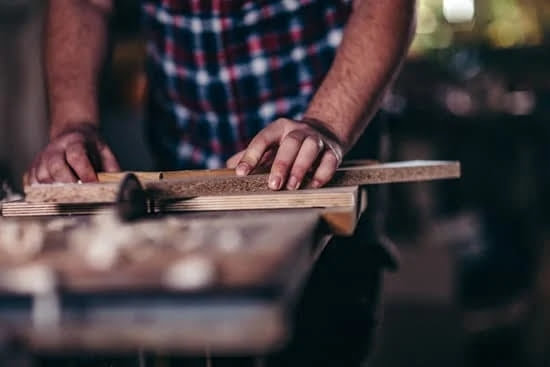Are you a woodworking enthusiast looking to elevate your craft? In this comprehensive guide, we will delve into the world of woodworking hinges hardware and explore the crucial role they play in woodworking projects. From understanding different types of hinges to choosing the right hardware for your project, we’ve got you covered with expert tips and advice.
Woodworking hinges hardware are essential components in any woodworking project, whether it’s constructing cabinets, creating furniture, or building decorative boxes. They not only provide functional support but also contribute to the overall aesthetic appeal of the finished piece. Understanding the different types of hinges available and how to select the best one for your specific project is key to achieving professional results.
In this article, we will walk you through everything you need to know about woodworking hinges hardware. From installing hinges properly and maintaining them for longevity to troubleshooting common issues, our goal is to equip you with the knowledge and skills necessary for successful woodworking projects. So, let’s dive in and explore the fascinating world of hinges and hardware in woodworking.
Understanding Different Types of Woodworking Hinges
When it comes to woodworking hinges hardware, there is a wide variety of options to choose from. Each type of hinge serves a specific purpose and has its own unique design and functionality. This section will provide a comprehensive guide to different types of woodworking hinges, including butt hinges, barrel hinges, and concealed hinges.
Butt Hinges
One of the most common types of woodworking hinges is the butt hinge, which consists of two rectangular metal plates joined together by a pin. These hinges are typically used for doors and cabinets and are available in various sizes and materials such as stainless steel, brass, and bronze. Butt hinges are known for their durability and strength, making them suitable for heavy-duty applications.
Barrel Hinges
Barrel hinges, also known as cylindrical hinges or pivot hinges, consist of two interlocking barrels that are joined together by a pin. These hinges are commonly used for gates, shutters, and furniture pieces that require smooth rotation. They come in different styles such as plain bearing barrels or ball bearing barrels to accommodate various load capacities and movement requirements.
Concealed Hinges
Concealed hinges offer a seamless and clean look as they are hidden from view when installed. They are often used for cabinet doors and furniture where aesthetics are crucial. These hinges can be surface-mounted or recessed into the wood for a sleek appearance. Concealed hinges also provide easy adjustment options for precise alignment and functionality.
Understanding the different types of woodworking hinges allows woodworkers to choose the right hinge for their specific project needs based on factors such as load capacity, movement requirements, aesthetics, and installation preferences. Whether it’s a sturdy butt hinge for heavy doors or concealed hinge for sleek cabinets, having a good grasp of these options is essential for successful woodworking projects.
Choosing the Right Hinges for Your Woodworking Project
When embarking on a woodworking project, selecting the right hinges is crucial to ensure the functionality and durability of your creation. There are several factors to consider when choosing the appropriate woodworking hinges hardware for your project. One important factor to take into account is the weight capacity of the hinges.
It’s essential to match the weight rating of the hinges with the weight of the door or lid they will be supporting. This will prevent issues such as sagging or misalignment over time.
Another key consideration is the material of the hinges. Woodworking hinges hardware are available in a variety of materials including steel, brass, and stainless steel. Each material has its own unique strengths and aesthetic appeal, so it’s important to choose one that complements your overall woodworking design while also ensuring durability and longevity.
The finish of the hinges is also an important factor to think about when selecting hardware for your woodworking project. The finish can greatly impact both the aesthetics and functionality of your creation. Common finishes for hinges include brass, chrome, nickel, and oil-rubbed bronze. It’s essential to choose a finish that not only complements the overall look of your woodworking piece but also provides resistance to corrosion and wear over time.
In summary, when choosing woodworking hinges hardware for your project, it’s crucial to consider factors such as weight capacity, material, and finish to ensure that you select the most appropriate hardware for both functional and aesthetic purposes.
| Factors | Considerations |
|---|---|
| Weight Capacity | Match with door or lid weight |
| Material | Steel, brass, stainless steel |
| Finish | Brass, chrome, nickel, oil-rubbed bronze |
Installing Woodworking Hinges
When it comes to woodworking projects, the installation of hinges is a crucial step that can greatly impact the functionality and aesthetics of the final piece. Whether you are working on a cabinet, door, or any other woodworking project that requires hinges, proper installation is key to achieving a seamless and professional look. In this section, we will provide you with step-by-step instructions on how to install woodworking hinges effectively.
Gather Your Tools and Supplies
Before you begin installing hinges, it’s essential to gather all the necessary tools and supplies. You will need a drill with an appropriate-sized bit for your screws, a screwdriver, hinge installation jigs (if needed), screws that are suitable for your hinge and woodworking material, and of course, the hinges themselves.
Marking and Positioning
Once you have your tools ready, carefully mark the position where you want to install the hinges. Use a pencil or marking tool to ensure accuracy. It’s important to position the hinges correctly for proper function, so take your time with this step. If you’re installing multiple hinges for one door or piece of furniture, make sure they are aligned properly.
Installing the Hinges
With your markings in place, it’s time to start drilling pilot holes for the screws. This is an important step to prevent splitting wood and ensure that the screws go in smoothly. Once your pilot holes are drilled, attach the hinge using the appropriate screws. Make sure they are tightened securely but be careful not to over-tighten as this can strip the wood or cause misalignment.
By following these step-by-step instructions and being mindful of positioning and proper use of tools and supplies, you can achieve flawless installation of woodworking hinges hardware for your projects.
Maintaining and Caring for Woodworking Hinges
Woodworking hinges hardware are essential components in woodworking projects, providing the necessary functionality for doors, cabinets, and other furniture pieces. To ensure the longevity and functionality of your hinges, proper maintenance and care are crucial. By following a few simple tips, you can keep your woodworking hinges in optimal condition for years to come.
One of the most important aspects of maintaining woodworking hinges is regular cleaning. Dust, dirt, and debris can accumulate in the hinge mechanism over time, causing it to become stiff or difficult to operate. Using a small brush or cotton swab, gently remove any buildup from the hinge area. Additionally, applying a lubricant specifically designed for woodworking hinges can help keep them operating smoothly.
In addition to regular cleaning, it’s important to check the screws and fasteners on your woodworking hinges periodically. Loose screws can cause misalignment and make the hinge less effective. Tighten any loose screws using a screwdriver to ensure that the hinge is securely attached to the door or cabinet frame. If any screws are damaged or stripped, replace them promptly to maintain the structural integrity of the hinge.
Proper installation is also key to ensuring the functionality and longevity of your woodworking hinges. When installing new hinges, be sure to follow manufacturer guidelines and use appropriate tools for the job. This will help prevent unnecessary wear and tear on the hinges, prolonging their lifespan and effectiveness.
| Maintaining Hinges | Caring for Hinges |
|---|---|
| Regular cleaning with a brush or cotton swab | Use a lubricant specifically designed for woodworking hinges |
| Periodically checking screws and fasteners | Tightening loose screws using a screwdriver |
| Proper installation following manufacturer guidelines | Using appropriate tools for installation |
Creative Ways to Incorporate Hinges in Woodworking Projects
When it comes to woodworking, hinges are not just a functional aspect of furniture and cabinetry, they can also be used in creative and innovative ways to enhance the overall design and functionality of your woodworking pieces. Whether you are working on a large furniture project or a smaller decorative item, there are countless possibilities for incorporating hinges in unique ways. Here are some inspiring ideas for using hinges creatively in your woodworking projects:
- Hidden Compartments: Utilize concealed hinges to create hidden compartments within your woodworking pieces. This could be a secret drawer in a desk, a concealed storage area in a jewelry box, or a hidden compartment in a decorative chest. The versatility of concealed hinges allows for seamless and discrete integration, adding an element of surprise to your creations.
- Fold-down Tables and Desks: Incorporate folding or drop-leaf hinges to design space-saving furniture pieces such as fold-down tables, desks, or workbenches. These innovative hinge designs allow for compact storage when not in use and can easily be folded down to provide functional workspace when needed.
- Revolving Panels: Experiment with pivot hinges to create revolving panels within your woodworking projects. This could include rotating bookshelves, swiveling picture frames, or revolving cabinet doors. The use of pivot hinges adds an interactive element to your pieces while maximizing accessibility.
Incorporating hinges creatively in woodworking projects not only adds visual interest but also enhances the functionality of the final piece. By thinking outside the box and exploring unconventional ways to integrate hardware, you can elevate the design of your creations while showcasing your craftsmanship and attention to detail.
Troubleshooting Common Issues With Woodworking Hinges
Woodworking hinges hardware are crucial components in any woodworking project, serving both functional and aesthetic purposes. However, like any mechanical component, hinges can sometimes encounter issues that can affect their performance. In this section, we will address some common problems that woodworkers may encounter with hinges and provide solutions to fix them.
Squeaky hinges can be a common nuisance in woodworking projects. The sound of a squeaking hinge can be irritating and disrupt the smooth operation of doors or lids. One simple solution to this problem is to lubricate the hinge with a silicone-based spray or grease. Applying a small amount of lubricant to the pivot points of the hinge can help eliminate the squeaking noise and ensure smooth movement.
Misalignment is another issue that woodworkers may face when working with hinges. This can occur when the hinge is not properly installed or if there is uneven weight distribution on the door or lid. To address misalignment, it is important to ensure that the hinge placement is accurate and that the screws are securely fastened. Additionally, adjusting the position of the hinges or adding extra support to distribute weight more evenly can help correct misalignment issues.
Loose screws in woodworking hinges hardware can also cause problems such as wobbly doors or lids. To fix this issue, simply tightening the screws with an appropriate screwdriver can often resolve the problem. It is also important to check for stripped screws and replace them if necessary to ensure a secure fit for the hinge. Regular inspection and maintenance of screws will help prevent loose screws from becoming a recurring problem in your woodworking projects.
- Lubricate the hinge with silicone-based spray or grease
- Ensure proper installation and even weight distribution
- Tighten loose screws and replace any stripped ones
Recommended Tools and Supplies for Woodworking Hinges
In conclusion, woodworking hinges hardware are essential components in any woodworking project, as they contribute to both the functionality and aesthetics of the finished piece. Understanding the different types of hinges available, such as butt hinges, barrel hinges, and concealed hinges, is crucial in choosing the right one for your specific project. Factors to consider when selecting hinges include weight capacity, material, and finish, all of which can impact the overall look and performance of your woodworking piece.
Proper installation of woodworking hinges is equally important in ensuring a seamless and professional look. Following step-by-step instructions and using recommended tools such as drills, screws, and hinge installation jigs can make the process smoother and more efficient.
Moreover, maintaining and caring for woodworking hinges is key to their longevity and functionality. By addressing common issues such as squeaky hinges, misalignment, or loose screws promptly with appropriate solutions will ensure your woodworking projects continue to function properly for years to come.
Lastly, exploring creative ways to incorporate hinges in woodworking projects can provide unique opportunities to enhance both functionality and aesthetics. Whether it’s using innovative hinge designs or finding new ways to integrate them into your pieces, there are numerous ways to utilize woodworking hinges creatively. Overall, understanding how to work with woodworking hinges hardware effectively will greatly benefit any woodworker by opening up new possibilities for their projects while ensuring long-lasting quality.
Frequently Asked Questions
What Are the Three Types of Hinges?
The three types of hinges are butt hinges, which are most commonly used on doors and cabinets; continuous hinges, also known as piano hinges, which run the full length of the door or lid; and finally, European hinges, which are commonly used on furniture and cabinet doors.
What Is the Strongest Type of Hinge?
The strongest type of hinge is often considered to be a heavy-duty or thick butt hinge. These are made from durable materials like stainless steel or brass and offer more support for heavy doors or lids compared to other types of hinges.
What Are the Four Mounting Styles for Hinges?
The four mounting styles for hinges are full mortise, half mortise, non-mortise, and surface mount. Full mortise hinges are recessed into the door and frame, while half mortise only requires one side to be recessed. Non-mortise hinges do not require any recessing, while surface mount hinges sit on top of the door and frame.

Hi everyone! I’m a woodworker and blogger, and this is my woodworking blog. In my blog, I share tips and tricks for woodworkers of all skill levels, as well as project ideas that you can try yourself.





